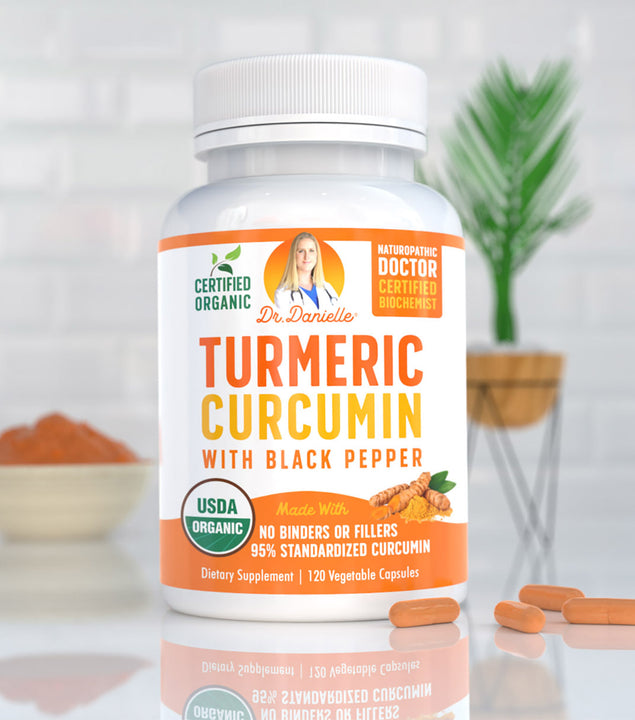Millions of Americans have pre-diabetes, diabetes, or suffer from some form of "insulin resistance” or metabolic syndrome. In fact, diabetes in the United States is increasingly on the rise. In 2017, diabetes was the 7th leading cause of death in the USA. According to the Diabetes Statistic Report for 2020, 34.2 million Americans, or 10.5% of the population suffer from diabetes.
As of 2018, 88 million adults aged 18 or older had pre-diabetes. (1) Diabetes affects all ethnic, economic and social backgrounds. It can lead to serious but often preventable complications such as nerve damage, fatigue, weight gain, kidney failure, stroke, heart disease, loss of vision, limb amputation, coma, and death.
Risk Factors for Diabetes Related Complications
- Smoking
- Physical Inactivity
- Elevated A1C levels
- High Cholesterol
- Elevated Blood Pressure
- Being Overweight or Obese

How Normal Blood Sugar Regulation Works
Glucose is a sugar used by our bodies for fuel. Glucose primarily comes from food and the liver. The liver stores sugar (in the form of glycogen) and produces glucose when needed. Sugar is absorbed into the bloodstream and taken up by cells with the help of a hormone called insulin. Normally, when an individual has not eaten in a while or blood sugar levels are running low, the liver breaks down glycogen into glucose and helps to maintain normal blood sugar levels.

Why High Blood Sugar?
Type 1 Diabetes
Type 1 diabetes is an auto immune type disease, in that the body attacks its own insulin producing cells in the pancreas. Because of this, little to no insulin circulates in the body, and blood sugar levels buildup. The exact cause behind this disease is not fully known but risk factors include family history, potential environmental exposure to a virus, geography, and auto-antibodies.
Causes of Pre-diabetes and Type 2 Diabetes
Pre-diabetes and “insulin resistance” can lead to type 2 diabetes. I like to think of glucose as a person knocking on your door and insulin as being the person who answers it. The "home" being the cells in your body. Normally, when glucose knocks on a cells door, insulin will answer and let glucose into the home. However, if glucose keeps knocking every few minutes, eventually insulin is going to get sick of them and stop answering. In the case of type 2 diabetes, your cells become resistant to the “signaling” or “knocking" of insulin. Ultimately the pancreas works to produce more and more insulin but is unable to keep up. This leads to blood sugar levels becoming elevated.

Risk factors for developing pre-diabetes and type 2 diabetes include but are not limited to inactivity, high blood pressure, elevated cholesterol and triglyceride levels, polycystic ovarian syndrome, age, race, family history, and being overweight or obese.
Causes of Gestational Diabetes
In gestational diabetes, the placenta produces hormones to help maintain the pregnancy. However, in some cases this can lead to cells becoming more insulin resistant.
Risk factors for developing gestational diabetes include age, being overweight, race, and family or personal history of experiencing gestational diabetes in a prior pregnancy.
The Side Effects of Pharmaceutical Drug and Diabetes

Pharmaceutical drugs play an important role in managing blood sugar levels and improving they way your body utilizes insulin. However, they can also have some undesired side effects. Here are a few examples of classes of drugs that are often prescribed to help those suffering from blood sugar dysregulation.
Biguanides
This class of drugs work to lower blood sugar levels by improving the way the body uses insulin. It also lowers the amount of sugar the liver produces. An example is metformin.
Side Effects: May cause B12 deficiency, gas, nausea, bloating, diarrhea, upset stomach and lactic acidosis.
Sulfonylureas
This class of drugs work by helping the pancreas to produce more insulin. Examples include glipizide, glimepiride, and glyburide.
Side Effects: The most common side effect is low blood sugar which can manifest as dizziness, confusion, shakiness, and sweating.
Thiazolidinediones (TZDs)
This class of drugs works to improve the way insulin works in the body. Examples include pioglitazone and rosiglitazone.
Side Effects: Fluid retention and swelling, increased LDL or “bad cholesterol” levels, weight gain, bone fractures, heart failure, and increase risk of bladder cancer in woman.

Alpha-Glucosidase Inhibitors
This class of drugs helps to slow the breakdown of carbohydrates into sugar. Therefore, patients are instructed to take them with the first bite of a meal. Examples include acarbose and miglitol.
Side Effects: Gas, diarrhea, stomach pain, as well as elevated liver enzymes.
Meglitinides
This class of drug works by helping the pancreas to produce more insulin. Examples are nateglinide and repaglinide.
Side Effects: Weight gain and low blood sugar.
DPP-4 Inhibitors
These drugs lower the amount of sugar you make as well as help the pancreas to produce more insulin after a meal. Examples are alogliptin, saxagliptin, and linagliptin.
Side Effects: Upset stomach, diarrhea, sore throat, stuffy nose, joint pain, acute pancreatitis, liver and heart failure.
SGLT2 Inhibitors
This class of drug works with the kidneys. In doing so, it helps your body to remove extra glucose through urine. Examples include canagliflozin, empagliflozin, and dapagliflozin.
Side Effects: Low blood sugar, increase risk of urinary tract infections (UTIs) and yeast infections.
When it comes to any drug, make sure your doctor is aware of all medications and supplements you are taking so they can determine if there are any potentially harmful drug interactions.
Natural Remedies to Maintain Blood Sugar
Pharmaceutical drugs play an important role in maintaining healthy blood sugar levels. There are also many factors that are influential when it comes to reducing your blood sugar levels naturally. Diet is the key factor! Take a look below for some natural remedies to naturally maintain blood sugar levels and optimize your health.
Eat Low Processed, Whole Foods

To lower blood sugar naturally, eat healthy, natural, organic, and mostly plant-based foods. Eating a good source of protein, healthy fats, and fiber can help stabilize blood sugar levels. High protein foods help maintain blood sugar over a longer period of time and prevent spikes in blood sugar. Soluble fiber in particular helps to slow the absorption of sugar. Because of this, it can be very beneficial in maintaining healthy glucose levels. It also helps to lower cholesterol levels which is a risk factor for developing diabetes. To learn more about dietary fiber, click here. Healthy fats are also important for maintaining good cardiovascular health and managing blood glucose levels.
Aim for Complex Carbohydrates
Simple carbohydrates are broken down quickly by the body into sugar. They do not help a person to feel full for very long either. They can lead to quick spikes and drops in blood sugar levels. Simple carbohydrates are often times refined and processed. Examples include many pastas, crackers, candy, and soft drinks.

Complex carbohydrates on the other hand have a longer chain of sugar molecules and take longer to breakdown. They help give the feeling of satiety for longer. Complex carbohydrates do not produce the same spikes in sugar and insulin levels adding to a more lasting energy source. Examples include whole grains, beans, and vegetables.
Switch your Sweeteners

Simple carbohydrates are sugars. Therefore to naturally lower blood sugar levels, work to avoid corn syrup, high fructose corn syrup (HFCS), glucose, fructose, sucrose, and sugar additives. Aim for natural sweetness like raw honey, organic stevia, maple syrup or dates.
Exercise!

Believe it or not, short term exercise actually helps cells to uptake more glucose. This is because your muscles and tissues need more energy to aid in repair and muscle growth. Long term exercise also aids in making cells more responsive to insulin, thereby decreasing insulin resistance. (3) Exercise is a natural remedy for high blood sugar, so get moving!
Decrease and Manage Stress
Stress leads to elevated cortisol levels which interferes with insulin. Because cortisol is a “stress hormone” and released during a “fight or flight” response, it leads to the body releasing glucose to be utilized as an immediate energy source. In doing so, cortisol inhibits insulin production in an attempt promote the immediate use of glucose rather than storage.
In addition, stress often leads to people over eating, consuming too much alcohol, not exercising, and taking as good care of themselves as they should. Unfortunately, these self destructive habits often lead to even more stress, often creating a vicious cycle.

Ultimately, there are natural ways to reduce blood sugar. Exercise, yoga, meditation, essential oils (such as rose and lavender), and adrenal support have all been found to be helpful in managing stress and cortisol levels. For more information on adrenal support and supportive herbs that naturally lower blood sugar through stress management, click here.
Get a Good Night's Sleep and Rest

According to the Center for Disease Control and Prevention (CDC), adults who get less than 7 hours of sleep in a 24 hour period, were more likely to be less physically active, obese and report chronic health conditions. (5) In addition, a lack of sleep has been shown to disrupt our natural circadian rhythms which increases the risk of diseases such as cancer and diabetes. For more information on how circadian rhythms impact your health, click here. Inadequate sleep can also raise appetite hormones such as gherlin. Gherlin is released to stimulate appetite, induce fat storage, and promote eating. It is highest in the morning and before mealtimes. Click here for more information regarding leptin, ghrelin, and your waist line. Therefore a way to naturally lower blood sugar is to aim for 7-9 hours of sleep a night and stick to a normal sleep cycle.
Alpha Lipoic Acid (ALA)

ALA is an antioxidant that helps scavenge free radicals, slows the aging process and fights inflammation. It can be found in green vegetables, potatoes, some types of yeast, as well as in dietary supplements. ALA helps convert glucose into "fuel" for the body to use. ALA also helps restore vitamin E and vitamin C levels. These benefits help preventing cellular damage in the body as well as improve the function and condition of neurons in disease processes such as diabetes. Because of this, many people suffering from diabetic neuropathy see improvements taking ALA. Some evidence even shows that it can lower blood sugar levels.









1 comment
We have ordered the ALA 5 times!
It helped my husband eliminate his painful neuropathy. We are sure that was it as it continues to help.
(Conversely when he stopped taking it the nerve pain came back)
Thank you for this beautiful well illustrated explanation of diabetes and how the prescription drugs “work”
We realize it was self induced but we did not realize how much the mainstream options are conducive to promoting it. Education on the subject is lifesaving so thank you again!